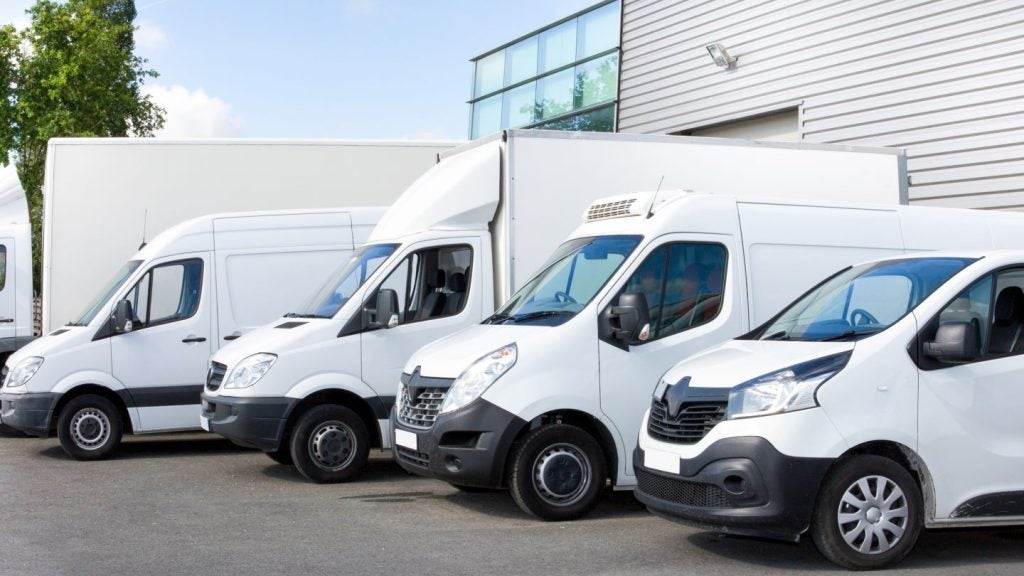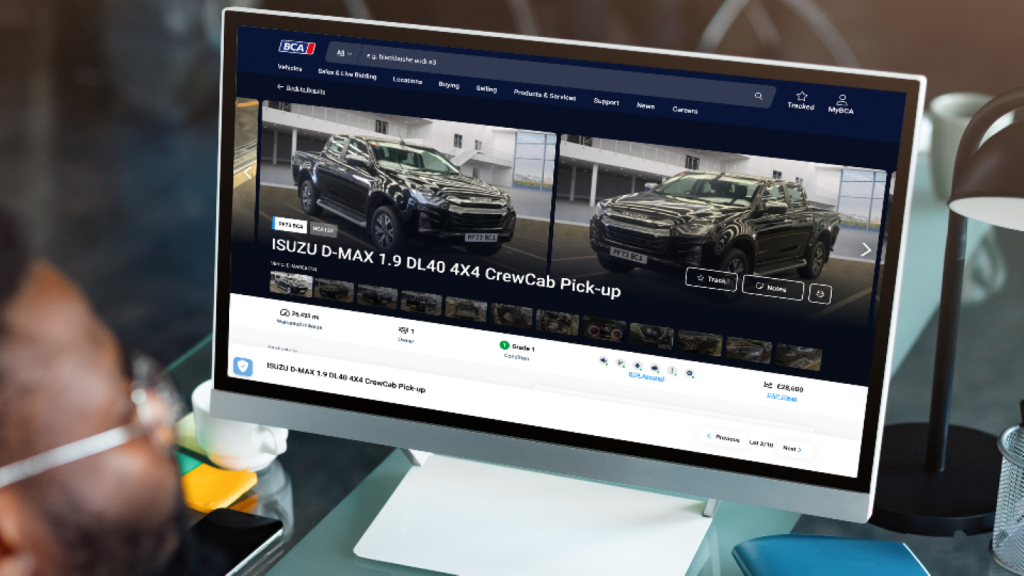Antonio Fabrizio finds that
captives are not having an easy time of it at present – but that
their unique links to car makers could leave them poised to benefit
from market trends.
Captive finance companies are certainly
not having an easy time of it at present.

Access deeper industry intelligence
Experience unmatched clarity with a single platform that combines unique data, AI, and human expertise.
In the last few months, the economic downturn has
caused car sales to plummet to unprecedented levels, which has
inevitably affected the overall activity of carmakers’ financing
arms.
At the same time, the increased risk associated
with declining residual values and the lack of liquidity available
to financial services businesses have added fuel to the fire, and
this has become clear in the results announced for the first
quarter of 2009 for many manufacturers, with the parent’s
performance also affecting their captives’ results.
However, there are also new opportunities ahead on
the horizon, as penetration rates increase and new trends emerge.
As industry experts have pointed out, 2009 could be “the year of
the captives”: but will it be so in a positive rather than negative
sense?
Drop in registrations

US Tariffs are shifting - will you react or anticipate?
Don’t let policy changes catch you off guard. Stay proactive with real-time data and expert analysis.
By GlobalDataIn the first three months of the year,
new car registrations in the UK fell by over 200,000 units, or 29.7
percent, and the decline has continued in April, with another 24
percent fall compared to the same month in 2008.
Fewer sales necessarily mean fewer
opportunities for captives to finance vehicles.
Stuart Anderson, head of communication in the UK
for Banque PSA Finance – the finance arm of Peugeot and Citroën –
says that in a period of declining sales, the main disadvantage of
captive finance arms, simply put, is that “their purpose is to sell
cars”.
“Therefore,” Anderson explains, “the lending
facility is not presently geared to take advantage of the pent-up
demand for credit in other areas of the market, such that the
finance products on offer are dependent on the general performance
of vehicle sales.”
According to Steve Gowler, managing director of RCI
Financial Services – the UK captive finance company for Renault and
Nissan – falling sales are at the top of the list of the issues
currently of concern to captives.
As a consequence, he says, captives will be looking
hard at their cost bases “in order to adapt them to lower volumes
of business and declining portfolios”.
However, Gowler is convinced the “lack of
availability of competitively priced funding” is even bigger a
challenge for captives at present because, as a “structural
problem” in the funding markets, it is more difficult to
address.
He goes on to explain that what is currently
hitting captives is the market’s perception of the risk attached to
car companies, and the resultant risk spread now attached to their
corporate bonds.
Gowler adds: “This makes the cost of funds high for
captives relative to bank base rate and relative to the cost of
funds of their competitors,” in particular finance companies whose
parents are banks which are either owned by or guaranteed by the
government.
“As such, captives have been restraining their
lending levels while seeking support from national governments in
order to secure liquidity and access to more competitive funding,”
Gowler notes.
The non-prime conundrum
For David Raistrick, UK manufacturing
industry leader at Deloitte, the decrease in sales is, in fact,
strictly linked to the lack of available credit for subprime or
near-prime customers.
Raistrick emphasises that, in a normal market, the
higher degree of default risk in sub-prime and near-prime lending
is “compensated for” by the application of higher interest
rates.
“However,” he says, “since the onset of the global
credit restrictions, many financial products to cater for this
group have been removed.
“This remains one of the key challenges facing
motor financiers, with some in the industry calling for government
to underwrite car loans, since most automotive finance houses do
not qualify for aid under the terms of the government’s support for
the banking sector.”
In addition, according to Raistrick, the drop in
residual values over the past year has amplified the other problems
facing the sector, creating a vicious circle.
“Large numbers of people are in negative equity on
their current financing deal as a result of sharp falls in residual
values, with the result that the remaining finance balance is
significantly higher than the value of the car itself,” Raistrick
points out.
As the monthly depreciation in car values is
falling faster than motor vehicle finance loans can be paid, this
has led to more voluntary terminations, more people delaying the
purchase of another vehicle, and more negative equity deals being
required, Raistrick observes.
Bank partnership?
While the industry is suffering, it is
also trying to react and come up with possible solutions.
A piece of research by Credit Suisse’s automotive
team, published last month, has suggested how captives could
overcome the higher costs of borrowing, emphasising the need for
their parent companies to “reinvent” their financing business in
order to remain competitive.
“Funding remains, and has always been, one of
the key fundamentals for running a successful captive finance
house. In times when manufacturers are cash rich, onward lending
through their captive is a very effective way of investing their
cash”
According to Credit Suisse analyst Arndt
Ellinghorst, one of the authors of the report, as funding costs
have rocketed, manufacturers should not look to keep their
financial services “purely captive” – but neither should they pass
the increased costs on to customers, who are already reluctant to
buy.
They should, instead, “unbundle” their captive
operations to banks, forming jointly-owned partnerships with
them.
Credit Suisse sees a “clear logic” for carmakers to
spin off their financial services businesses into joint ventures
with commercial lenders, because this would combine the banks’
financial expertise and funding advantages with carmakers’ access
to customers.
Based on Credit Suisse estimates, if vehicle
manufacturers wanted to achieve a 15 percent return on equity, they
would need to charge their customers a rate of 10.1 percent, versus
7.3 percent if banks were involved.
Eliminating this 200-300 basis point spread would
structurally lift margins by 15 to 21 percent, Credit Suisse
says.
Therefore forming a joint venture with banks would
be highly beneficial for manufacturers, as they would keep access
to financial services products, while at the same time securing
lower refinancing costs.
One major concern for carmakers is that, with this
model, they could lose flexibility in the leasing deals they offer,
as banks would make stricter risk assessments regarding residual
values and default risks.
But Credit Suisse is convinced that dealing with a
third party could actually be a “cure for the system”, as banks are
likely to be better placed to score clients than car companies are,
thus reducing the cost of risk.
The report concludes: “In our view a joint venture
is an interesting way forward. Indeed, it gives the banks an
incremental source of profit at no extra cost – no cash payment, no
goodwill paid
“It gives the car makers access to part of the
profit from the car lending business which would have become loss
making otherwise.”
An example of a similar joint venture took place in
2006 between Fiat, the Italian carmaker, and Crédit Agricole.
According to figures released at the time, the
partnership between the French bank and Fiat Auto Financial
Services resulted in a cash amount of more than €3 billion (£2.7
billion) for Fiat and a reduction in net industrial debt by around
€350 million.
But other companies may look at it in the
future.
For example, Keith Dye, CEO of BMW Group Financial
Services in the UK, has not ruled out such a possibility, although
he has highlighted that different market conditions as well as
different local requirements will determine what funding structure
better suits the needs of the captive.
“Funding remains, and has always been, one of the
key fundamentals for running a successful captive finance house,”
Dye says.
“In times when manufacturers are cash rich, onward
lending through their captive is a very effective way of investing
their cash.”
BMW Financial Services, Dye says, evaluates the
best structure under which to operate its network of captives
around the world on an “ongoing basis”, adding that “every
individual market has its own unique requirements”.
Dye adds: “BMW Financial Services operates in some
markets with partners, in some where all funding is sourced
locally, in most where we are funded from a central treasury
function and in some markets where we are fully licensed
banks.”
However, he believes the best strategy can change
over time, depending on market conditions, market maturity and the
size of the captive business.
“Hence it is part of ongoing strategic review to
evaluate the various options from time to time.” Dye says.
For other companies like Ford, the finance arm is
seen as a “strategic asset” which is an “integral part” of its
parent, and therefore it remains “focused on supporting Ford as a
wholly-owned captive finance company,” a spokesman says.
The spokesman adds that Ford Financial Europe works
closely with dealers, a strategy that is particularly relevant
during an economic downturn.
“Our prudent and consistent lending practices
ensure qualified dealers and customers are able to buy vehicles in
a tough credit environment,” he says.
Strategic worth
In general, however, whether or not
vehicle manufacturers will opt for a joint venture with banks, what
is certain is that captives will continue to be of key strategic
value when selling vehicles.
Penetration levels, for instance, have risen at
Banque PSA Finance – up by 1.2 percent last year, and the company
has said that this positive trend has continued into the first
quarter of 2009.
The finance company believes it will play a big
role in helping its parent, PSA Peugeot Citroën, to sell the seven
new models planned for launch in 2009, which it said includes
smaller and more efficient models, in line with the current
economic climate.
Overall, captives are well-placed precisely because
of their link with the manufacturer, which according to Gowler is
their greatest strength – one which becomes even more significant
in a downturn.
“The competitive financing offers available from
captives attract good quality customers with whom the captive can
build a strong relationship through CRM programmes”, Gowler
says.
Russell Hamblin-Boone, a spokesman for the Finance
& Leasing Association, agrees.
“Captives are part of a global corporation, which
means they can offer more attractive deals on new stock,”
Hamblin-Boone says.
“Obviously, they benefit from strong branding and
they have a franchised dealer network serving only that captive
finance provider, so there are advantages in size.”
Despite this advantage over banks, many in the
industry have asked for direct or indirect support from the UK
government, although not everyone thinks the issue has been
addressed properly so far.
Gowler, for instance, says he was in favour of a
scrappage scheme like the one announced in the 2009 Budget, which
is hoped to stimulate new car sales – as it has already done in
Germany and France – and therefore boost business volumes for the
captives.
“Ideally the government could have
established a level playing field whereby the captives would have
had access to the same credit guarantee schemes that have been made
available to the deposit-taking banks. This would have allowed
captives access to funding at more competitive rates”
But, in his opinion, the government
should, in fact, be doing more to support the sector.
“Ideally the government could have established a
level playing field whereby the captives would have had access to
the same credit guarantee schemes that have been made available to
the deposit-taking banks,” he says.
“This would have allowed captives access to funding
at more competitive rates.”
At the very least, according to Gowler, the
government should consider providing a guarantee for “good”
asset-backed securities (ABS) schemes, in order to stimulate the
reopening of the ABS market and thereby enable captives to raise
competitive funding in that way.
However John Lewis, head of the British Vehicle
Rental and Leasing Association (BVRLA), does not think that the
government should get too involved, apart from making sure that the
money it has given to banks flows through to leasing companies as
well as captives.
“We don’t believe the government should be doing
anything to help this particular bit of the leasing industry, which
is historically the most profitable part of many manufacturers’
business,” Lewis says.
“We are confident the wider leasing industry is
robust enough to manage through all economic environments, provided
it gets access to affordable funding and is not shackled with
excess regulation and government tinkering,” Lewis concludes.
|
Company |
2009 |
2008 |
% change |
|
Banque PSA Finance |
Revenue Q109: €462m (£413m) |
Revenue Q108: €524m (£468m) |
-12% |
|
Ford Motor Credit |
Pre-tax earnings Q109: -$36m (-£24m) |
Pre-tax earnings Q108: $32m (£21m) |
-213% |
|
Honda Financial |
Operating income FY09: ¥80bn (£555m) |
Operating income FY08: ¥117bn (£812m) |
-32% |
|
RCI Financial Services |
Revenue Q109: €446m (£399m) |
Revenue Q108: €506 m (£452m) |
-12% |
|
Toyota Financial Services |
Operating income FY09: ¥-72bn (-£484m) |
Operating income FY08: ¥86.5bn (£581m) |
-183% |
|
Volkswagen Financial Services |
Operating income Q109: €156m (£138m) |
Operating income Q108: €276m (£244m) |
-44% |
|
NB: All results are for global operations |
|||







